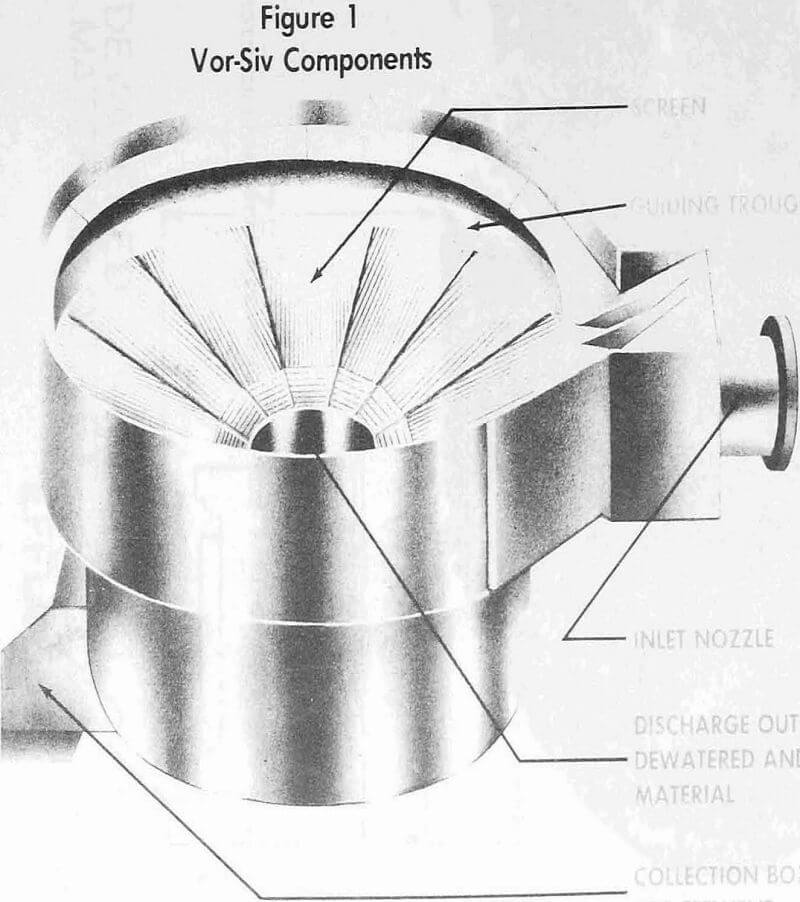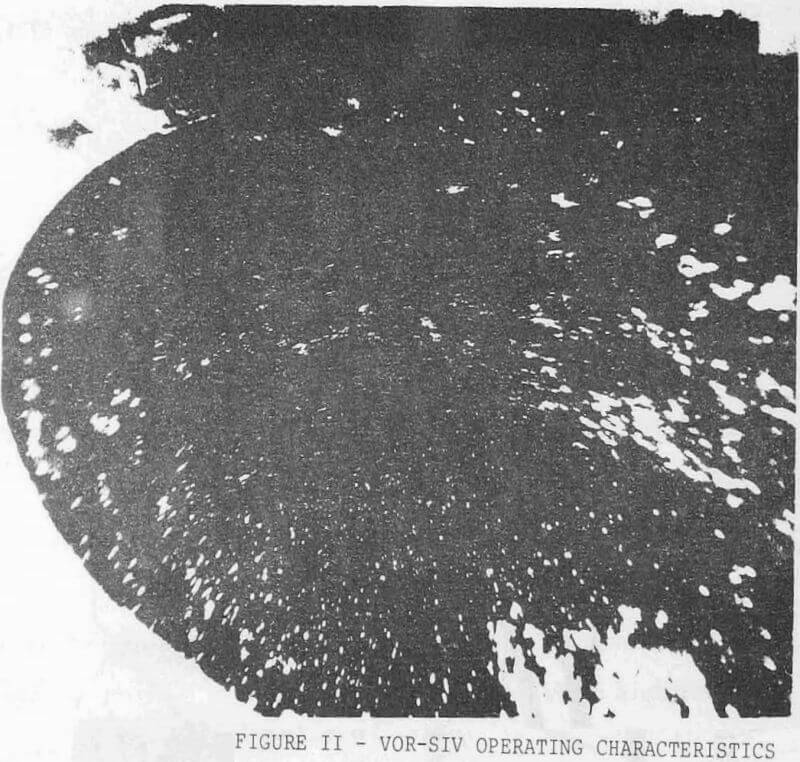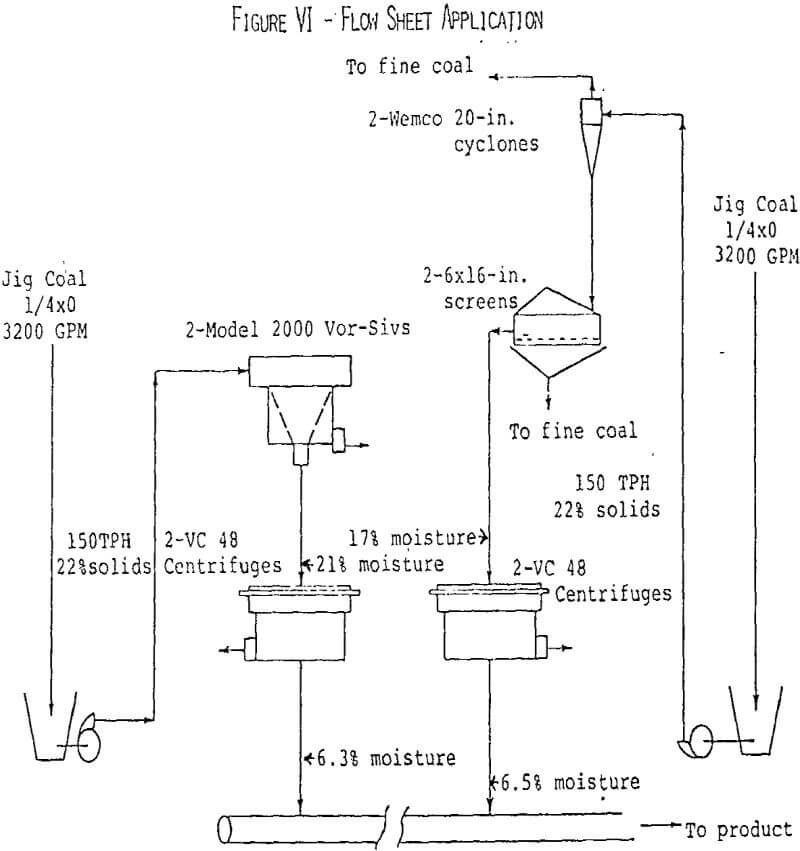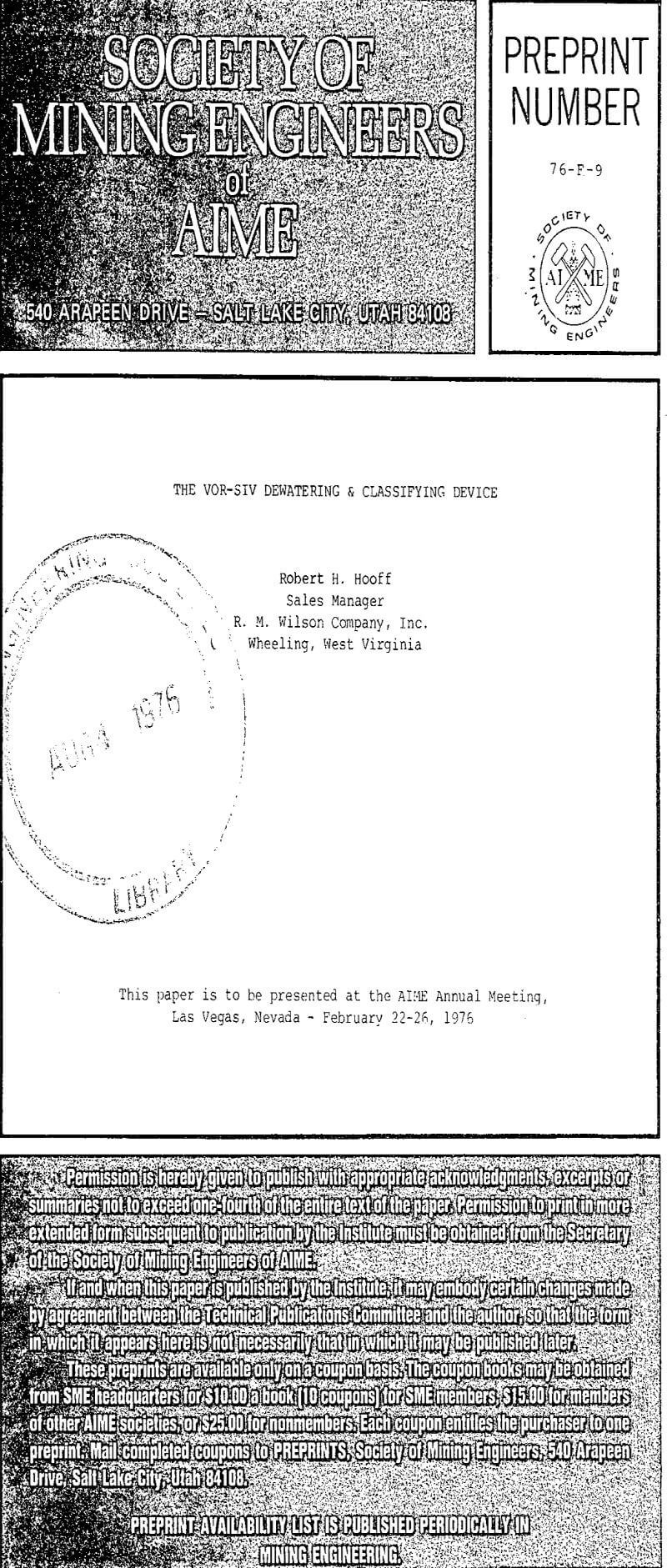The Vor-Siv Dewatering and Classifying Unit was developed by the Polish Coal Industry because of a need for a unit that would dewater and classify high volumes of solids in water slurry. To be practical, the unit needed to be relatively small in size, simple in design, involve low operating costs, and be able to give a dewatered product of less than 30% moisture. The answer to the above mentioned criteria was the Vortex Dewatering Sieve or, as we refer to it, the Vor-Siv.
Some of the advantages of operation and installation include:
- No moving parts
- No motor or drive requirements
- High operating capacities – up to approximately 3000 GPM pulp (or 70 GPM per square foot of screen surface)
- High degree of dewatering, as low as 20% surface moisture
During operation/solids in a water slurry fed under pressure are introduced through the inlet nozzle and into a directional nozzle which channels the material into the circular raceway. During this stage of the operation, the slurry rotates in the raceway causing a stratification of the material, due to both the rotation and subsequent centrifugal force.
By the time the slurry reaches the bottom quarter of the basket, almost all of the water and fine material has been filtered through the screen. This causes the solid portion of the slurry to loose its rotational energy and tumble down the remaining quarter of the basket where a final dewatering action takes place. The slot openings on the bottom quarter of the basket are positioned perpendicular to this downward tumbling action to again provide the cross-flow effect.
The dewatered and classified material is discharged continuously around the complete circumference of the discharge outlet for the de- watered and classified material. The water and fines are collected behind the screen and discharged through the collection box for the effluent.
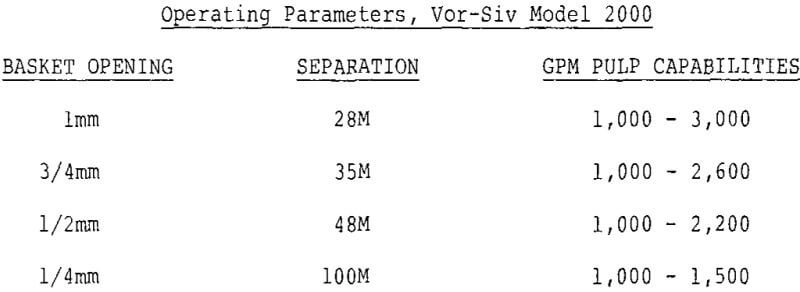
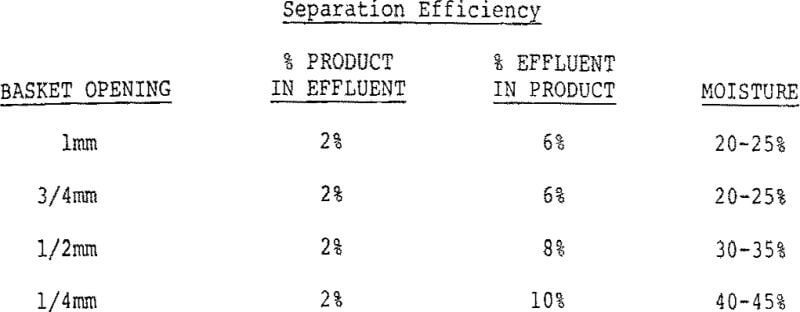
When the Vor-Siv is functioning under normal circumstances, the operator should experience approximately 3000 hours of operation per basket. Several features have been incorporated into this device to help ensure the operator of this basket life. The direction of flow can be changed so that the slurry is always presented with a sharp leading edge. This direction of flow can be changed by merely flopping the inlet nozzle. The basket can also be rotated either clockwise or counterclockwise so that every area is completely utilized. The basket comes in two sections to include an upper and lower half which are bolted together. This eliminates having to replace the complete basket when only one section is worn. To date, we have experienced about a 3 to 1 replacement ratio, top to bottom respectively. All the above mentioned features help the operator get the maximum possible basket life.
Since the original installation of the Vor-Sivs at this location, all the feed from both Vor-Siv Units was channeled into one unit. The resultant feed to this unit was 3200 GPM and 150 TPH. Samples of the Vor-Siv product while feeding all the material to one unit showed a product surface moisture of 27.8%. This is an increase of about 8%, but the tonnage and gallonage were both doubled. To date, this plant has continued to operate both Vor-Siv Units because of the original plant layout.
